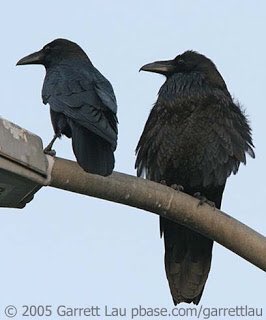Welcome new followers! Are you ready to play one of the most fun #Scicomm games on Twitter??? Well get ready, because #CrowOrNo is here and ready to knock your socks off
How does #CrowOrNo work? Every Wednesday at about 11:30am PST I’ll post a photo of a bird. It’s up to you to decide if it’s a crow or not.
In this game, a correct crow answer constitutes any bird that has the word crow in its recognized common name (what you’d find in a field guide).
Photos can be sourced from anywhere in the world and show a bird of any age. Typically I’ll reveal the answer at 5:30om, though today it will be closer to 4:00. Ready???
I hope none of the new players weren’t scared off #CrowOrNo today, because this was not an easy one folks! But the extra hard ones are what keep you on your toes, and after such a long hiatus I didn’t want anyone thinking I’d gone soft 😉
So what’s the answer to today’s #CrowOrNo challenge? 🥁🥁🥁🥁 This week’s bird is NOT A CROW! It’s a turkey vulture!
Flight is tricky because so often we see birds either streaking past us so fast we can’t really pay attention to their wing shapes, or we see birds soaring where the wings are fully extended as with the crow below. 

In this case though the vulture is kind mid breast stroke, so the primary feathers (the finger-like wing feathers) have condensed together and you start to see a more dramatic bump of the carpal (the wrist). 

One hint (admittedly not a particularly strong one) that it’s not a crow is the tail. See how the feathers are sort of scalloped? Crow tails are generally a more smooth line, but TUVUs often show this kind of scalloping. 

But admittedly all these clues are pretty hard to detect and I wouldn’t blame you for still being dubious, so let’s hand over the real kicker. Here’s the same photo with the shadows removed. So nicely done to the folks that guessed TUVU!!! 

Well what did the new players think? Will you be back next week? I hope so! See you next time folks, and thanks again to @537H for the submission!!!
• • •
Missing some Tweet in this thread? You can try to
force a refresh











